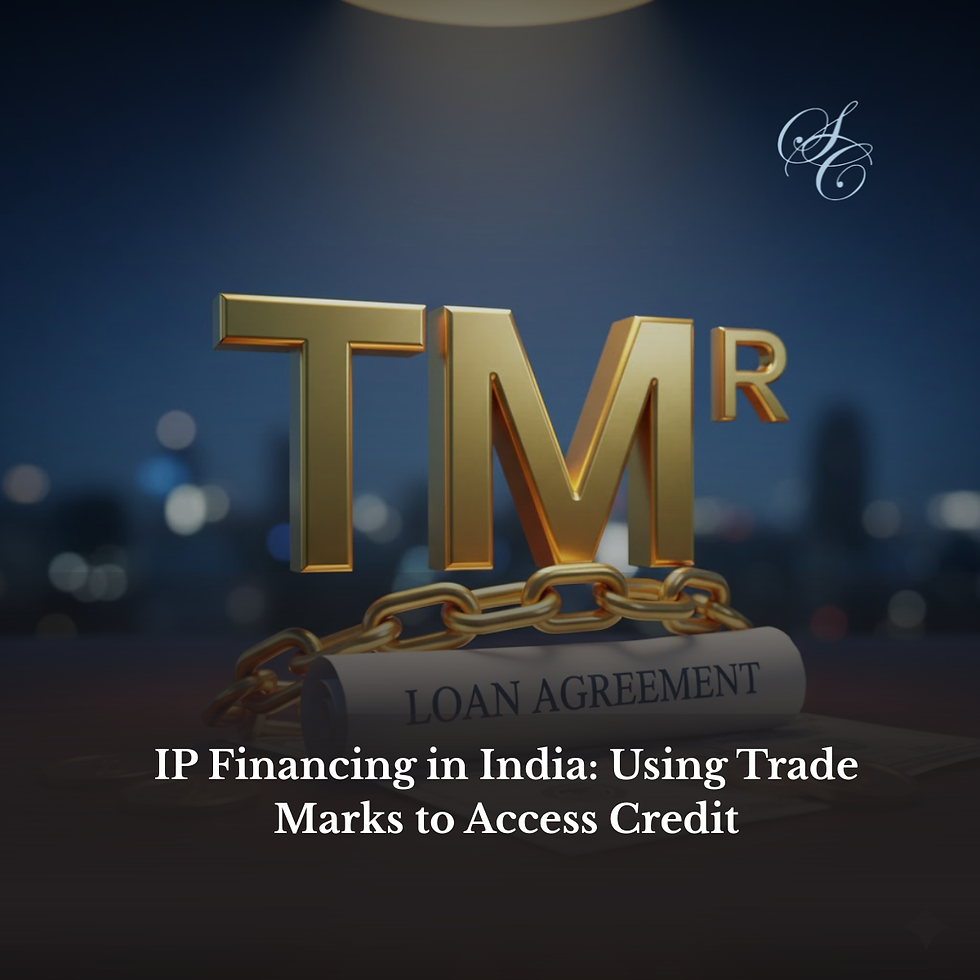Every Green And Yellow Colored With Double Dimple Designed Soap Is Not Dettol: Delhi High Court
- Sarwajeet Singh
- Jan 15, 2021
- 5 min read
Our Associate, Anand Kumar discusses “Every Green And Yellow Colored With Double Dimple Designed Soap Is Not Dettol: Delhi High Court”
The Delhi High Court denied an interim injunction to RB Health (US) LLC and Anr. (“Plaintiff”) who sought to restrain Dabur India Ltd (“Defendant”) from using a shape of a soap bar bearing the mark SANITIZE and other features of the soap bar.
The Plaintiff alleged that the shape and configuration of the Defendant’s soap bar was copied from the Plaintiff’s registered design. Further, the Plaintiff also alleged that several other features of the Defendant’s soap (SANITIZE) were similar the Plaintiff’s soap (DETTOL) bearing the taglines (‘be 100 % sure’, ‘everyday protection against wide range of unseen germs’, etc.), colors (i.e., green and orange), packaging containing the overlapping plus sign and device of sword.
The Defendant challenged the legality of the Plaintiff’s registered design. It contended that, on the day when the Plaintiff filed an application for registration of the design, the design was not new or novel. As per the Defendant, other known registered designs similar to the Plaintiff’s registered design, including one in name of Hindustan Unilever Limited (HUL), were already in the public domain i.e., published.
The Plaintiff contended that the alleged challenge to its registered design by the Defendant cannot be sustained because firstly, HUL’s design registration is not similar, secondly, registration of a design outside India does not constitute the prior registration under the Act and thirdly, HUL’s design registration does not constitute the prior publication.

The Court analysed the table set out above and observed that the Defendant had, prima facie, established that there was a serious and credible challenge that the Plaintiff’s subject design registration was new or original. The Court noted that the principle feature of the Plaintiff’s design registration was the rounded corners and the two (2) “dimples” on either side of the soap bars. HUL’s designs, that were published on 28.02.1989 and 31.01.1995, were similar to the Plaintiff’s design registration. As per the Court, the main features of the soap bars i.e., rounded corners and dimpled sides were apparent in the design registration of the Plaintiff.
On the Court’s observation, counsel for the Plaintiff argued that registrations of known and similar designs outside the country would not ipso facto lead to cancellation of designs registered in India. Counsel contented that such prior designs must be registered in India. The Court agreed with this argument and observed that there is no territorial embargo in respect of the prior publication. The Court clarified that insofar as prior publication is concerned, it should [if it is a design on paper] depict the shape or other features of the article which are clear to the eye, as it was evident, in this case, from the WIPO search report. As per the Court, the ocular impression should be the same as one would experience of the design-in-issue if it were to be applied to a physical object. If such a situation applies, as it does, in this case, then, it would fall within the purview of prior publication as enumerated under relevant provision of Act [Section 4 (b) read with Section 19(1)(b)]. In other words, the prior publication [in this case of HUL] would fulfil the indicia of being in ‘tangible form’ or use prior to the date of filing of the Plaintiff’s application for the registration of the soap design.
On the issue of the passing off, the Court observed that for such action the Plaintiffs must fulfil the classical trinity test enumerated as below:
Goodwill and reputation in the goods sold or services offered to the consumers at large, which, in turn, should be interlinked with the get-up in which they are proffered.
The Plaintiff must be able to demonstrate that the Defendant’s misrepresentation qua the goods or services offered by him have led consumers to believe that they originate from the Plaintiff.
The action of the Defendant has resulted in damage or is likely to result in damage.
A comparison of the packaging of the rival products is shown below:

The Court observed that, while applying the first indicia set out hereinabove, the difference between reputation and goodwill has to be borne in mind. While goodwill is inextricably linked to territory, reputation may extend beyond the geographical area where business is carried out. Therefore, in a case, where a Plaintiff institutes a passing off action, it is incumbent upon him to demonstrate that he has, inter alia, goodwill in the jurisdiction over which the concerned court has sway.
Noting the facts of the present case, the Court observed that Plaintiff’s claim as regards the colour (green and orange) and smell of the soap bar were non-sustainable because there were enough materials on record put forth by the Defendant to show that several soap bars in the market have similar features, even if not identical. As regards the taglines such as “Be 100% Sure”; “Everyday protection against a wide range of germs”; “Germ protection for the whole family”; and “protection from 100 illness causing germs” and indications of device of a sword and an overlapping plus (+), the Court observed that neither the taglines nor the indications/signs are registered with the trademark authority. Moreover, since competing products were hygiene-products, the Court concluded that taglines and indications/signs used by the Plaintiffs appear to be “customary” in the current language of the trade for the purpose of designating hygiene-products, which includes, soap bars. Lastly the Court remarked that atleast, at this stage, it could not find enough material to conclude that the taglines had acquired the secondary meaning.
On the point of misrepresentation, the Court observed that passing-off is a tort of deceit and when one looks at the get-up adopted by Defendant, it is clear, at least at this stage, that it does not intend to misrepresent that the soap bar manufactured by it originates from the Plaintiffs. The Court observed that the Defendant’s packaging boldly bears the mark “DABUR”. Thus, the Court opined that the cumulative effect of the packaging adopted by Defendant was one which sought to distinguish its product from that of the Plaintiffs.
Most importantly, the Court observed that while balancing the rights of the Plaintiffs and Defendant in case of the infringement and passing-off, it must take into account the interest of the public at large as well i.e., creation of an environment which is conducive to a healthy competition amongst manufacturers and sellers.
Consequently, based on the aforesaid findings and observation, the Court held that there is no scope to infer passing-off.
Citation: RB HEALTH (US) LLC AND ANR. vs. DABUR INDIA LTD. (CS(COMM) 319/2020), decision dt. November 27, 2020 by Delhi High Court.




Comments